8 September, Boğazkale
Pansiyon Asikoğlu 60TL
Absolutely LOVED the ancient Hittite
capital of Hattuşa, occupied some 4000 years ago. We spent several hours this
morning walking the 5km hilly circuit around the ruined city, which in its
heyday was home to over 50,000. The Hittite* kingdom stretched from Syria to
Europe, and “squared up to the Egyptian, Babylonian and Assyrian empires”. A
section of city wall has been recreated. The walls, some of the thickest in the
ancient world and over 6km long, were constructed of timber and mud brick on
stone foundations. The foundations of numerous temples remain, as do sections
of the city gates and a ceremonial tunnel under the wall. It rained in the
night and again as we walked to the site, so we were treated to an atmospheric morning
complete with rainbow, the air fresh and cool. The earliest known peace treaty
was concluded between the Hittites and the Egyptians. On the site is a large
green jade cube, amazingly smooth to the touch, which some say was a gift from
Ramses II... We also visited Yazilikaya, the site of an outdoor religious
sanctuary where the Hittites carved images of gods and kings onto the rockface.
*Lonely Planet: While the name may evoke
images of skin-clad barbarians, the Hittites were a sophisticated people who
commanded a vast Middle Eastern empire, conquered Babylon and challenged the
Egyptian pharaohs more than 3000 years ago. Apart from a few written references
in the Bible and Babylonian tablets, there were few clues to their existence
until 1834 when a French traveller, Charles Texier, stumbled on the ruins of the
Hittite capital of Hattuşa. In 1905 excavations turned up notable works of art,
most of them now in Ankara’s Museum of Anatolian Civilisations. Also brought to
light were the Hittite state archives, written in cuneiform on thousands of
clay tablets. From these tablets, historians and archaeologists were able to
construct a history of the Hittite empire. The original Indo-European Hittites
swept into Anatolia around 2000 BC, conquering the local Hatti, from whom they
borrowed their culture and name. They established themselves at Hattuşa, the
Hatti capital, and in the course of a millennium enlarged and beautified the
city. From about 1375 to 1200 BC Hattuşa was the capital of a Hittite empire
that, at its height, shared Syria with Egypt and extended as far as Europe. The
Hittites worshipped over a thousand different deities; the most important were
Teshub, the storm or weather god, and Hepatu, the sun goddess. The cuneiform tablets
revealed a well-ordered society with more than 200 laws. The death sentence was
prescribed for bestiality, while thieves got off more lightly provided they
paid their victims compensation. Although it defeated Egypt in 1298 BC, the
empire declined in the following centuries, undone by internal squabbles and
new threats such as the Greek ‘sea peoples’.
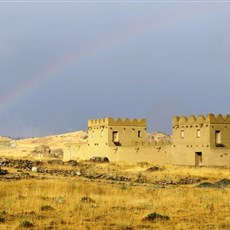
Hattuşa - reconstructed section of city walls
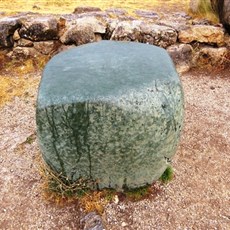
Hattuşa - gift from Ramses II
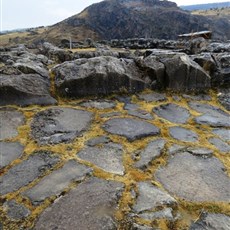
Hattuşa - road
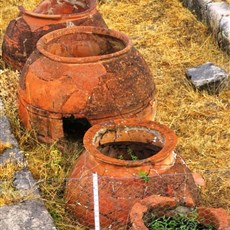
Hattuşa - pottery
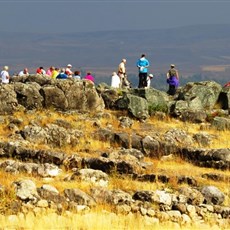
Hattuşa

Hattuşa
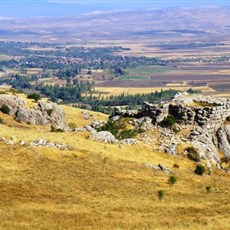
Hattuşa
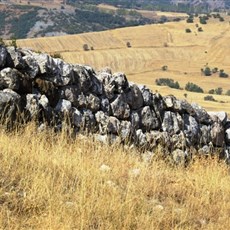
Hattuşa
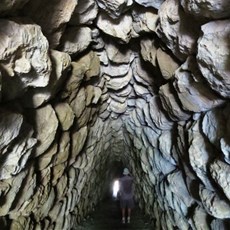
Hattuşa - ceremonial tunnel under Sphinx gate
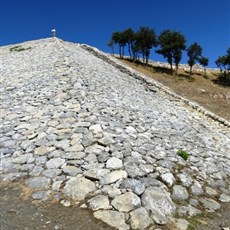
Hattuşa - city wall
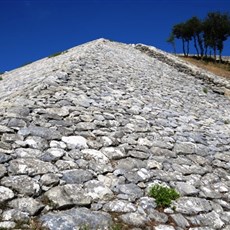
Hattuşa - city wall
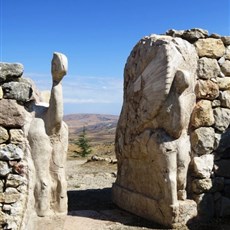
Hattuşa - Sphinx gate
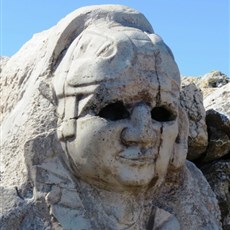
Hattuşa - Sphinx gate
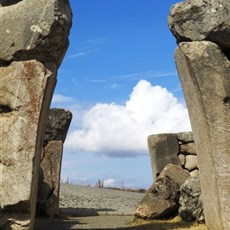
Hattuşa - King gate
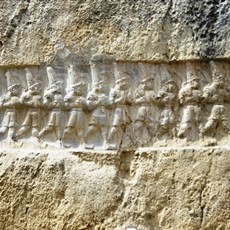
Yazilikaya

Yazilikaya